jetzt, jetzt, jetzt
About this Play
This evening, dear Zurich audience, is perhaps the last chance for a while to enjoy some well-kept “woke mash”. We know you miss it already! Or is this theatre as it always has been and always will be? A person enters the stage. She takes on a role. They want to show something, and everyone reads something else into it. He doesn’t want to show anything, and everyone reads a sign into it.
While it is unclear what the future will bring at the Schauspielhaus Zürich, one thing is certain: a network of young people who will not turn their backs on the theatre arts for now. In addition to the mission of premiering contemporary Swiss authors during her time as in-house director, Suna Gürler always set herself the task of dedicating herself to her future superiors. For this play, 30 of them form the ensemble.
An evening about the manifold possibilities of connection and the wondrous nature of time. jetzt, jetzt, jetzt is a flurry of individual goals, shared desires and conflicting concerns, just like the Pfauen — a place of tangled history. In the midst of it all: the question of how a beginning becomes a network and what that network can create.
Trailer © Lisa Gertsch
- Staging
- Suna Gürler
- Concept
- Yunus Ersoy / Suna Gürler / Lucien Haug / Alina Immoos
- Stage and Costume Design
- Moïra Gilliéron / Cleo Niemeyer-Nasser
- Music
- Singoh Nketia
- Choreography & Rehearsals
- Suna Gürler / Alina Immoos
- Text
- Lucien Haug
- Light
- Michel Güntert
- Artistic Collaboration Video
- Robin Nidecker
- Dramaturgy
- Yunus Ersoy
- Audience Development
- Tali Furrer
- Artistic Mediation T&S
- Zora Maag / Alina Immoos
- Production Manager
- Rosa Stehle / Jonas Junker
- Production Assistance
- Carlotta Späni / Wilma Schapp / Dominic Schibli
- Stage Design Assistance
- Lioba Bangert
- Costume Design Assistance
- Flurina Vieli / Lucien Bricola
- Costume Design Intern
- Melvin Tobler / Sally Ndiaye
- Stage Manager
- Eva Willenegger
The young programme is supported by Max Kohler Stiftung, Elisabeth Weber-Stiftung, Stiftung Accentus and Landis & Gyr Stiftung
The rights to the play belong to the authors. Lucien Haug is represented by S. Fischer Verlag, Frankfurt am Main
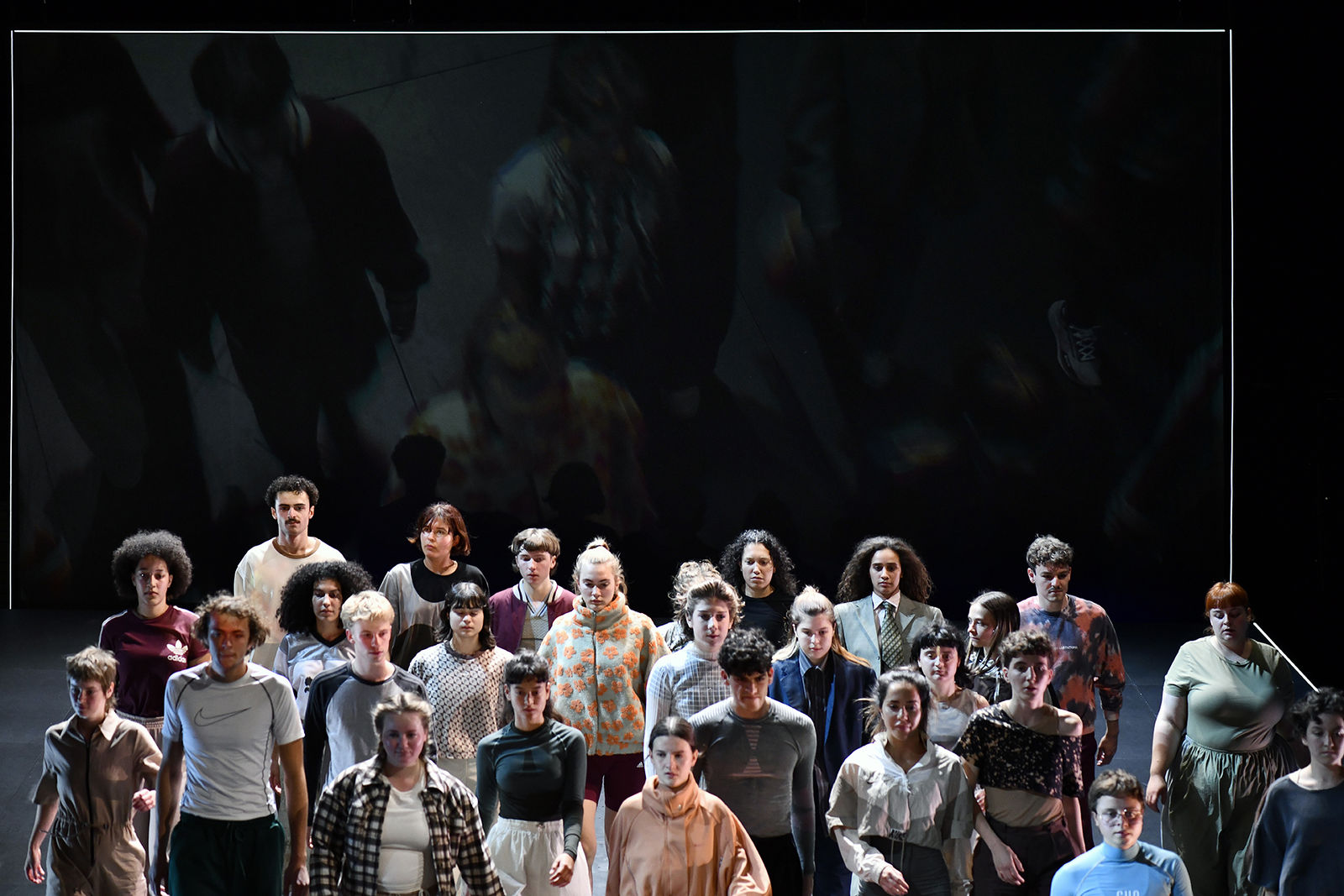
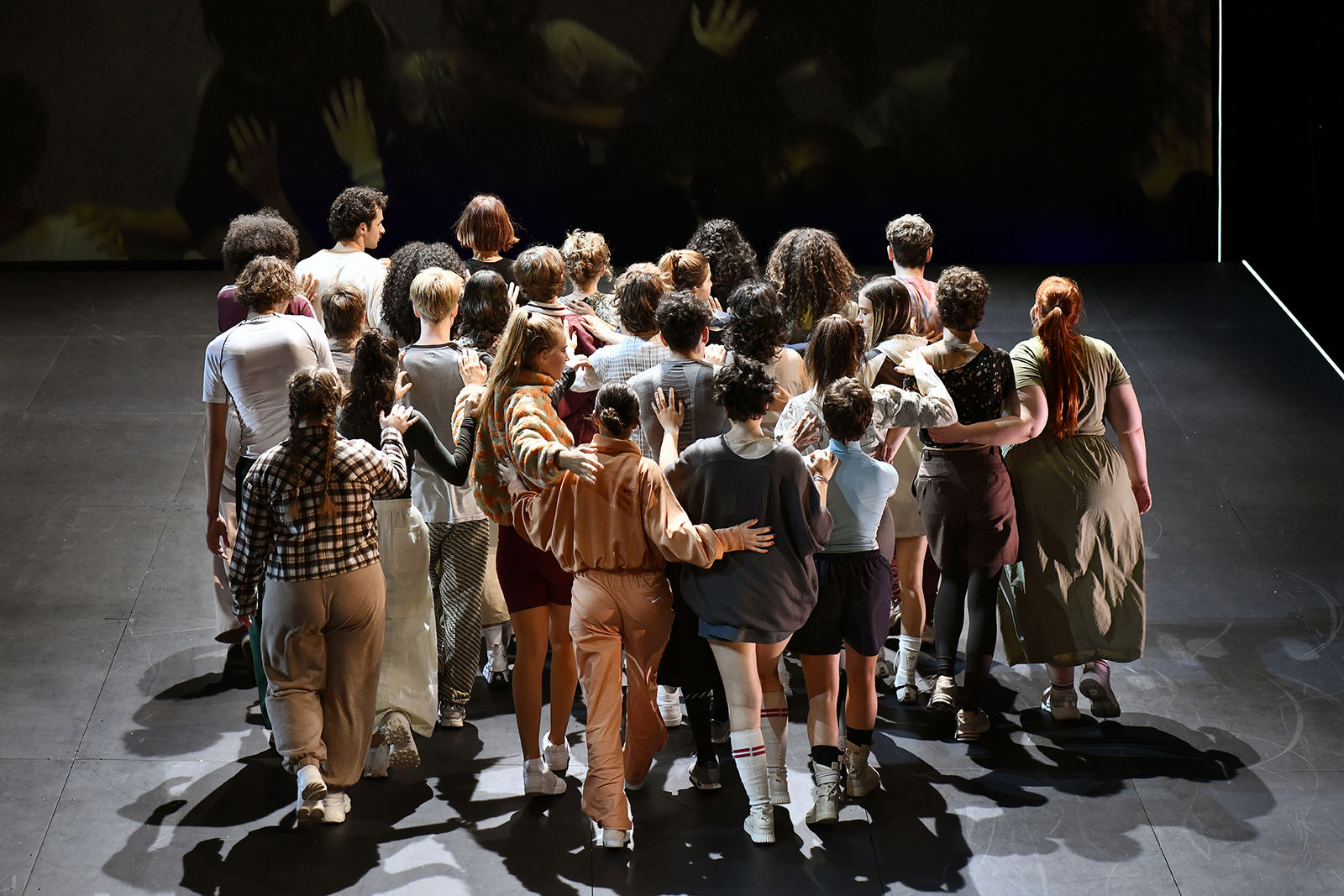
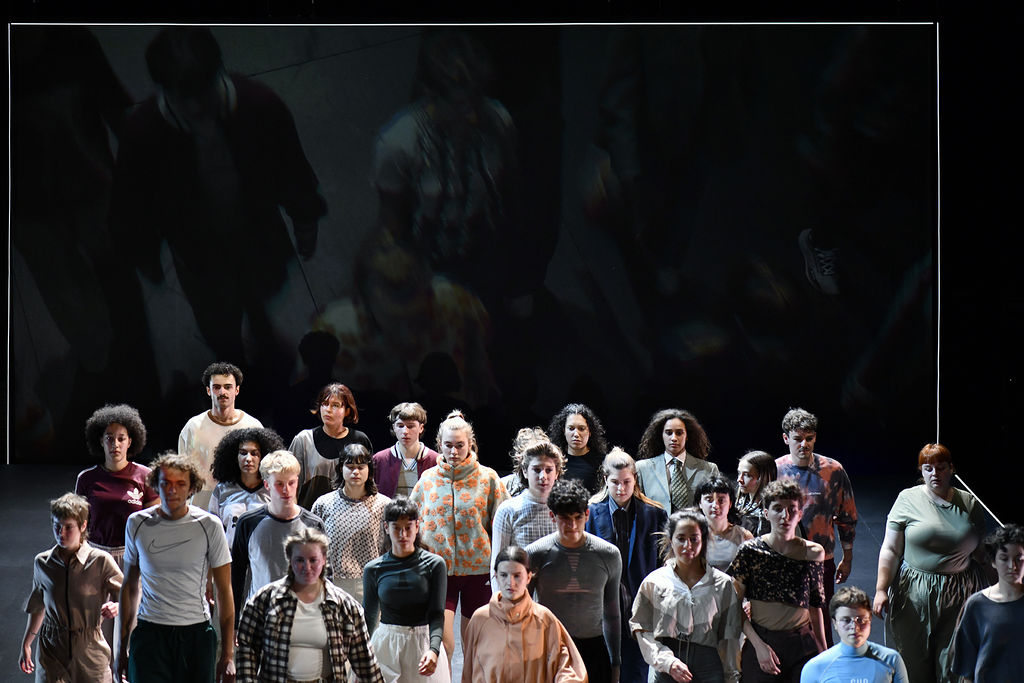
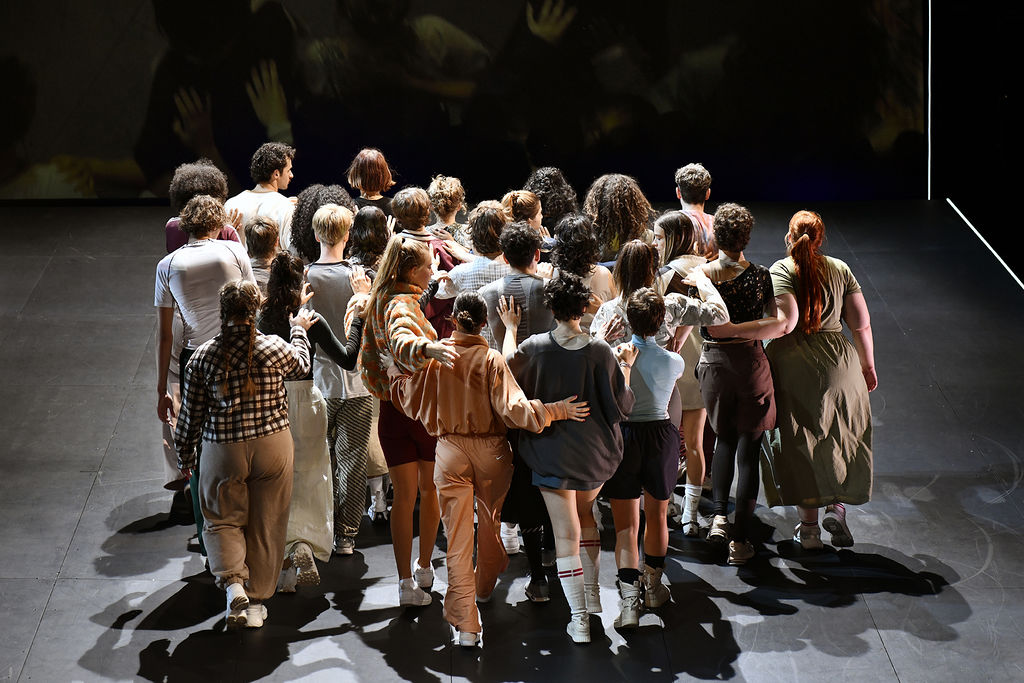
About this Production
Few people like to be alone; the vast majority seek contact with others. Many form a particularly close bond with another person and become part of a couple. They are also part of groups, for example friendship circles. Some also join clubs and parties, become part of a large group and form subgroups. In addition, there is the affiliation to a society, a population. At all these levels, individual languages, codes and forms of communication emerge. If communication is successful, goals can be pursued: The founding of a family, the establishment of a residential community or political changes.
At the centre of jetzt, jetzt, jetzt is the preoccupation with what becomes visible when the gaze is directed towards these connections that people form: a network
The ensemble for this play is made up of 30 young adults from the network that has formed around the Schauspielhaus Zürich over the last four years. They attended the Youth Club or follow the theatre on Instagram, have participated in the Theaterjahr, are working in the cloakroom, or are already familiar with the spotlight due to their participations in other plays by in-house director Suna Gürler, or the Open Stage:
Taking this as a starting point for the development of the play, one of the first questions the team and the ensemble dealt with was that of the beginning. While on the one hand performative moments have made it into the production, such as the inhalation with which a person indicates to other speakers that they want to say something, or the counting down as is common in sports or on New Year's Eve, Suna Gürler and Alina Immoos have also incorporated elements from physical research into the beginning of movement into the choreographies.
As the network already suggests, this research also showed that every beginning is already preceded by a beginning. Part of the rehearsals was also the reading of an excerpt from Gerald Raunig's Dividuum, which in turn takes up the Denkfigur of “beginning in the middle” (Gilles Deleuze):
“Every beginning is dividual. Just as the authorship of any book is divided, as all thinking always already stands on the shoulders of giants, who are obligated in turn to entire swarms of averagely tall people and allegedly negligible entities, as an intellect is inhabited by many ghosts, is never solely individual, everything begins in the raging middle of the dividual. The middle is raging, because in it things pick up speed, a stream overflowing in all directions,
the opposite of regulated mainstream, mediocrity and mediation. The middle is not simply along the way between a beginning and an end; linearity and myths of origins are sucked into its maelstroms. The middle is dividual, because it implies parting the parts. Even if a “me” speaks here, this me has never been entirely alone. Divided and dividing, this instituent me shares its becoming with many instances of beginning in the middle.”
A simple thought experiment is to look at one's own life, where it quickly becomes clear that one's own parents also had parents who in turn had parents who in turn had ... This little thought experiment also shows that there is never just one beginning, one origin.
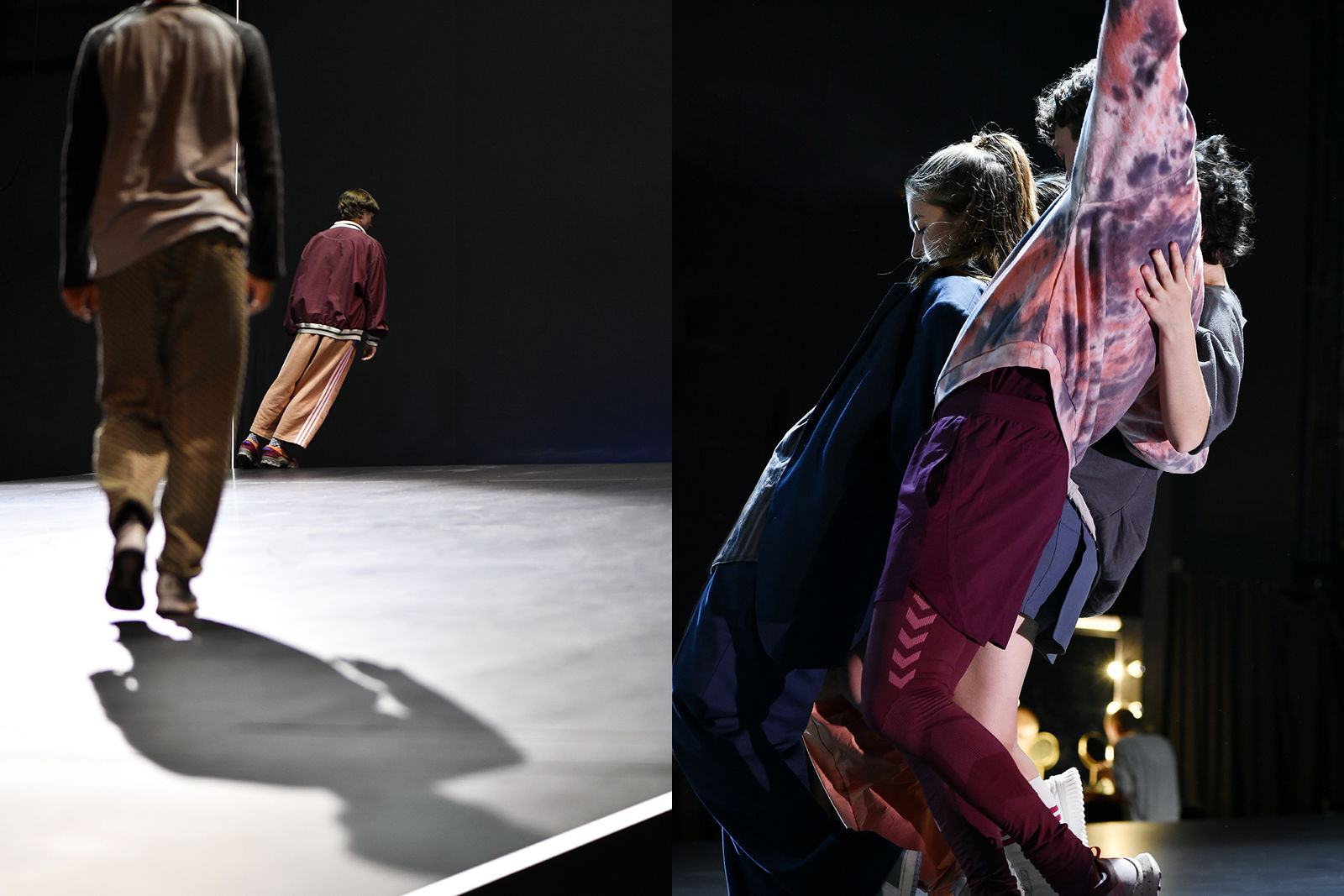
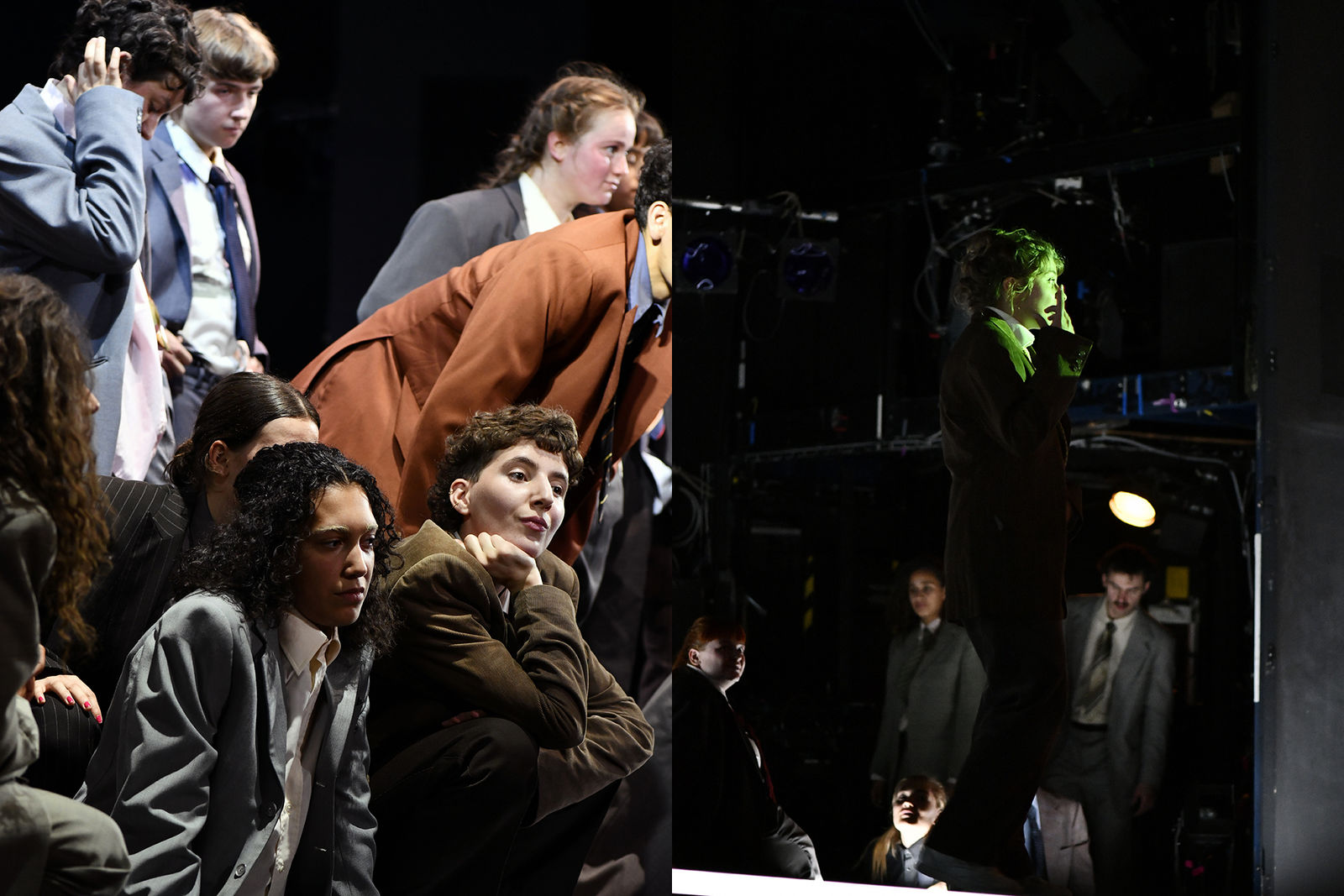
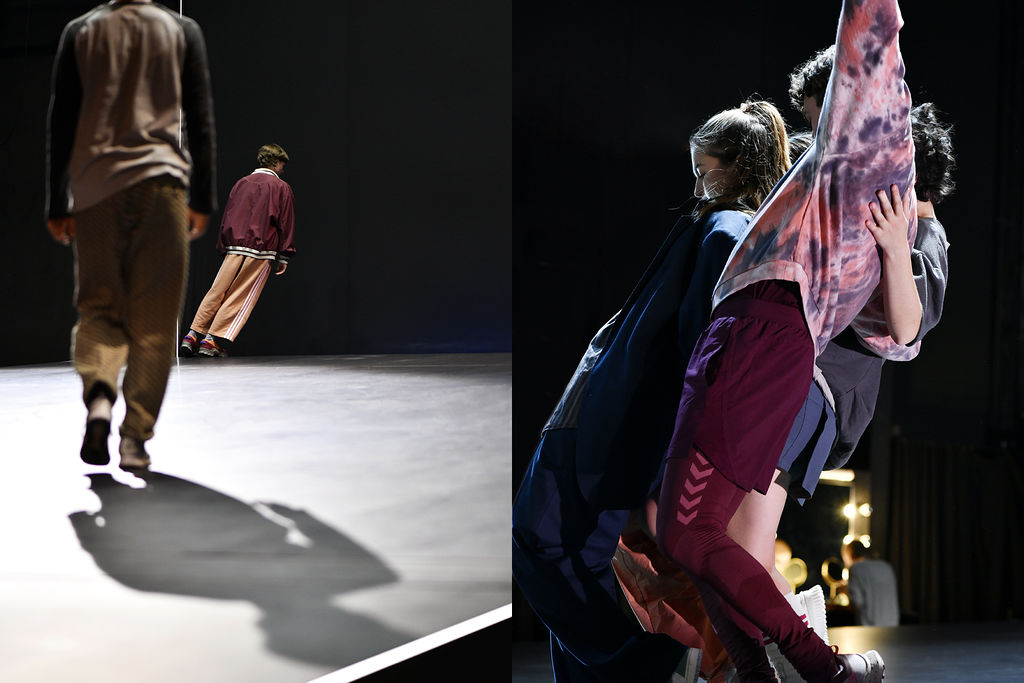
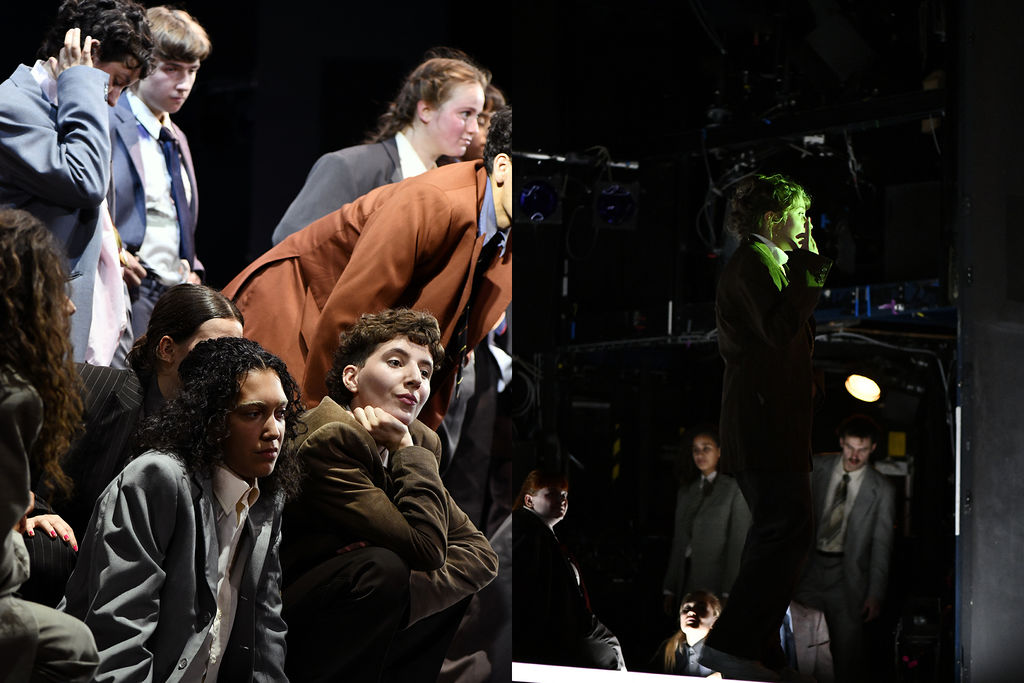
Exposed Architecture
Following the thoughts on the origin, the transition from the entrance to the beginning of the play happens imperceptibly. Without the light changing, a person Samira Graf, appears in seemingly everyday clothes, walks across the stage – and disappears. Then the stage is empty again. Has the play now begun? Was that an actor or actress or is the idea that the audience also walks across the stage? Did the play start when you left home? Or when you bought your ticket?
After some time, a rustling can be heard, the same person walks again through the aisle in the audience. A vision presents itself: How this person must have found their way back into the foyer through the theatre's corridors, which are hidden from view, to start all over again. What do they experience on the way, while the audience stares at the stage or looks around searchingly? Who are they in contact with?
Now she re-enters the stage, crosses it, disappears again.
Who was that? Where did this person go? The repetition sharpens the gaze, the movements become gestures, signs, the first clues to a story. And last but not least, the very essence of time comes into play, its inexorable passing – especially in the theatre: "When, to the moment then, I say: Ah, stay a while! You are so lovely!" in Goethe's Faust, or: jetzt, jetzt, jetzt – and simultaneously standing still, its spiralling, which always brings something new that nevertheless resembles the old. Accordingly, the production works with loops, whose repetitions and variations keep sharpening the gaze anew.
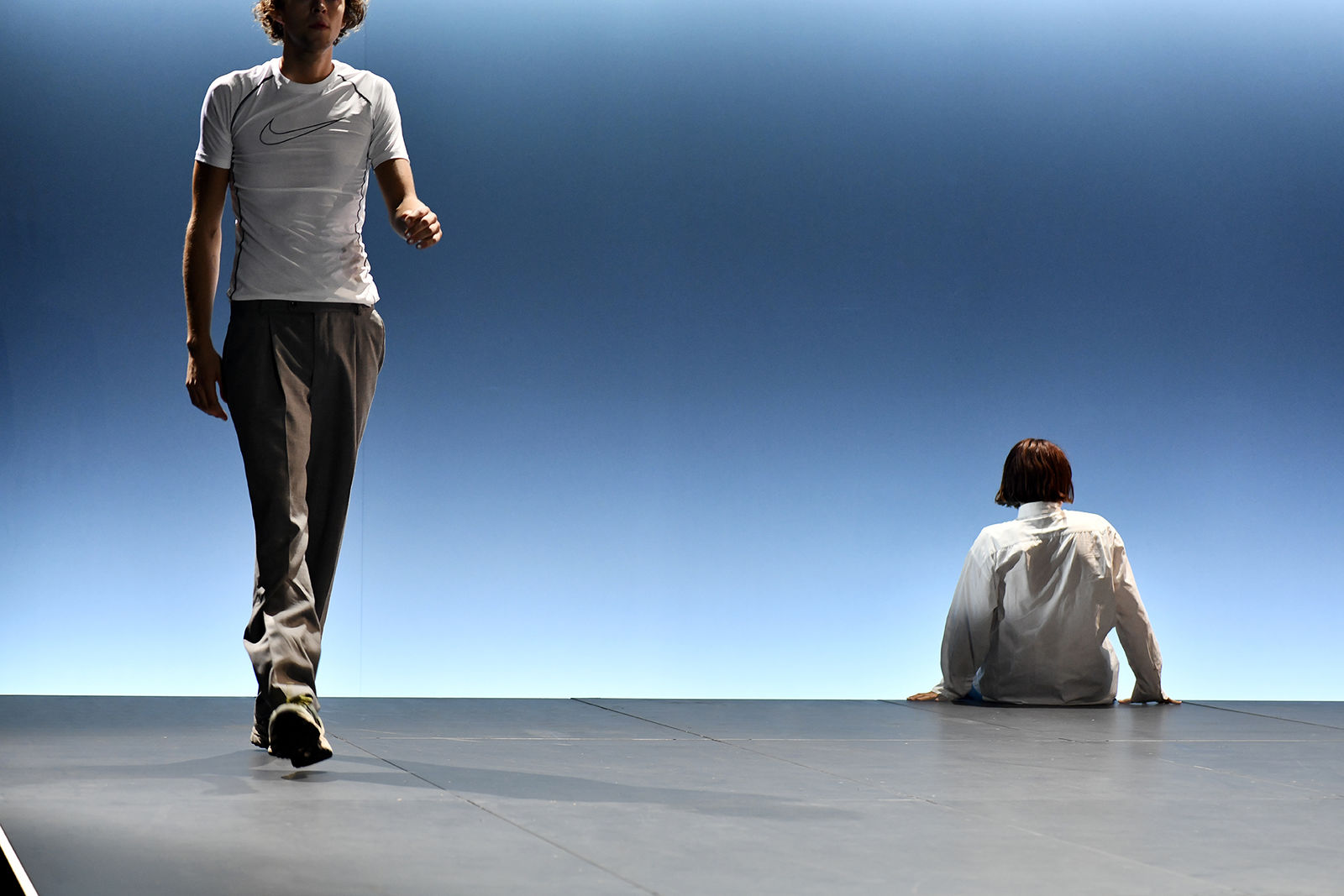
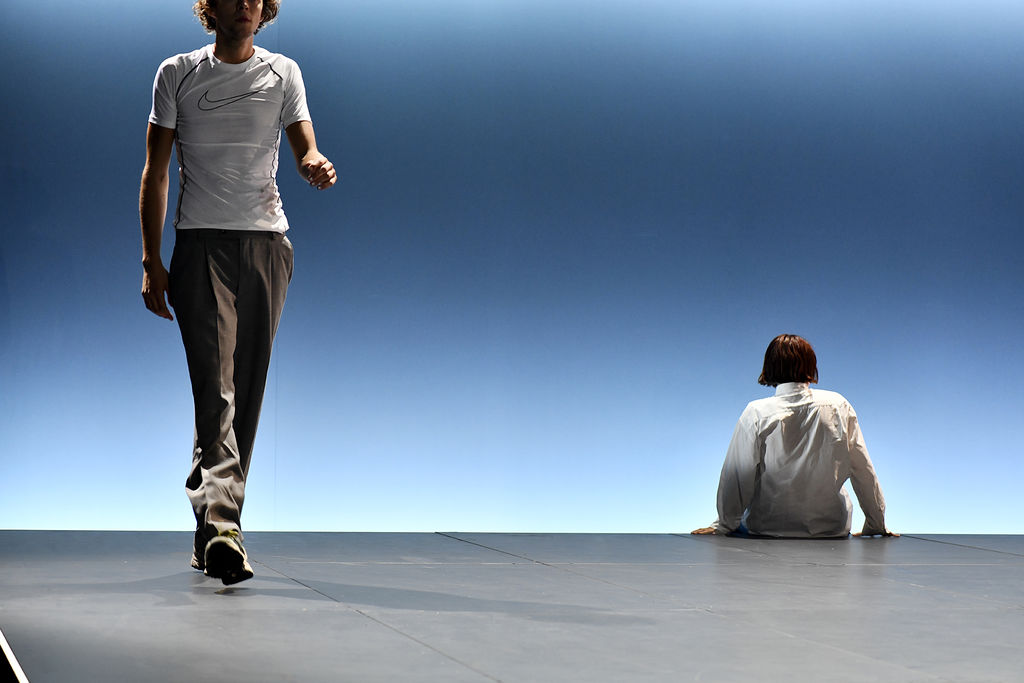
And new questions arise: Is this stage really empty? At least it is a place full of history. And if you pay close attention, you will see that this play is tailored precisely to the Pfauen, to this theatre steeped in history, created from a beer garden with a small stage for farces, which later became an exile for Jewish and communist theatre makers and is still the subject of heated discussions today. Just one example of many that the evening deals with on an aesthetic level: if the Pfauen – when you enter it as an audience member – seems ideally aligned with the theatre, the view inside reveals a hotchpotch. Since a wide auditorium was first built according to the French model for the proverbial seeing-and-being-seen of the audience, and then the narrow stage soon no longer met the artistic wishes and was replaced by a so-called "German" spatial stage, it is now not particularly well visible. Moreover, the acoustics under the balcony are so bad that the stage portal is offset with microphones as standard so that the actors don't have to shout at the front row and still are able to reach everyone.
But it is not only on the level of architecture that this production understands the stage as a space of possibility, as a place where anything can take place, as a place that can become any other place. If the production initially brings an architecture into awareness to which the audience has no access and which remains hidden from most people, the focus gradually shifts to the protagonists.
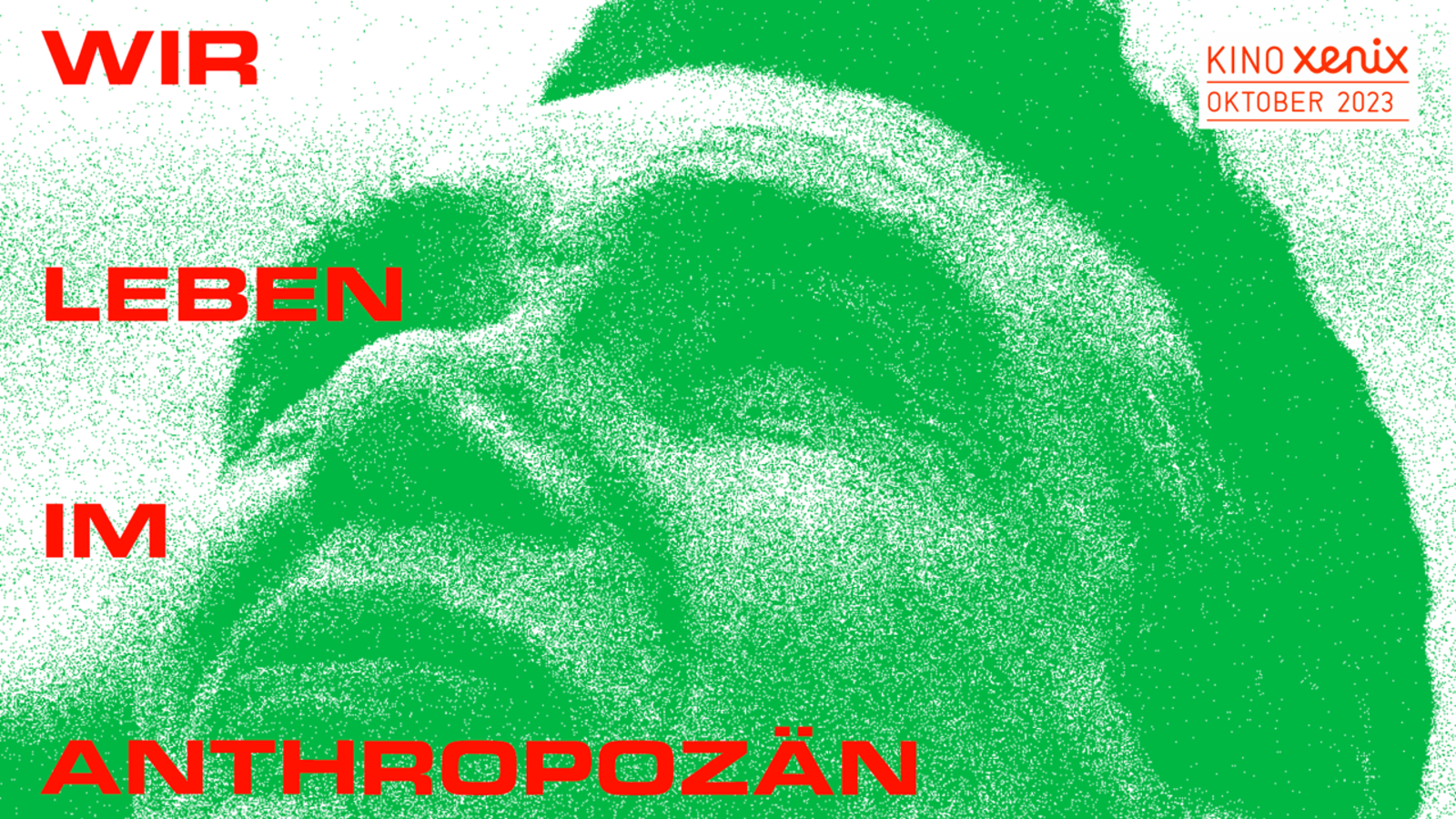
Ad
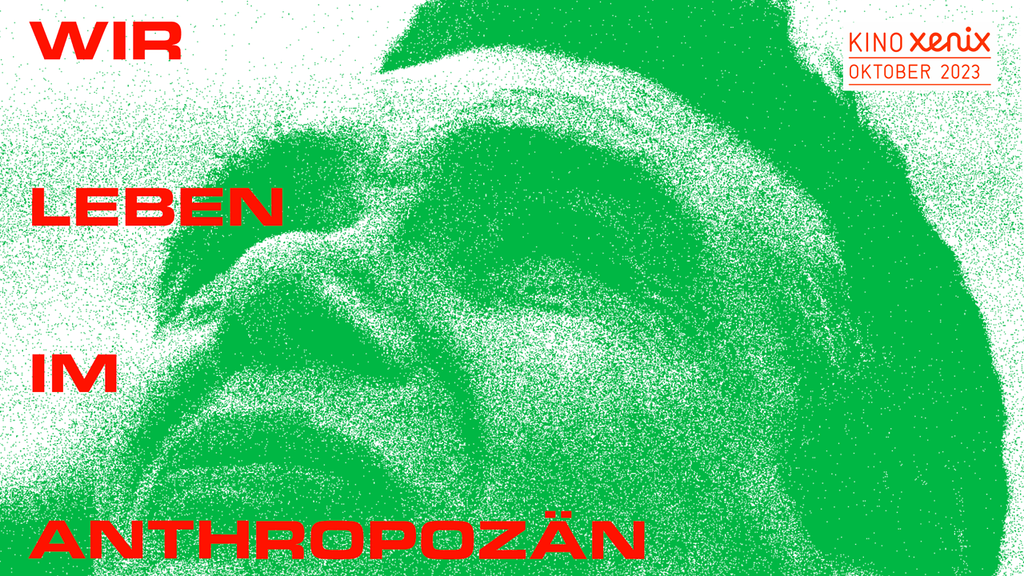
Ad
Alone in the Network
One of the first questions the ensemble addressed in rehearsals was: "What would I like to do on the stage of the Pfauen?" Some focused on what they are particularly good at, others wanted to break the expectation of young people having an answer to the questions about the present, others expressed their rage that it is so damn difficult to survive in this world between climate catastrophe and femicide. Enno Rennenkampf's desire to show a drag performance has become part of the play – including all the questions emerging from it, which were then transferred into a small scene with Sora Ndiaye. The texts spoken by Onur Kurtulmuş and Rosa-Lin Meessen tell of being overwhelmed by the mere thought of being able to do everything, a recurring theme in the conversations with the ensemble. While Fayrouz Gabriel addresses concrete economic conditions, Mira Guggenbühl discusses structural economic conditions. Obviously, not everything is possible, and certainly not for everyone.
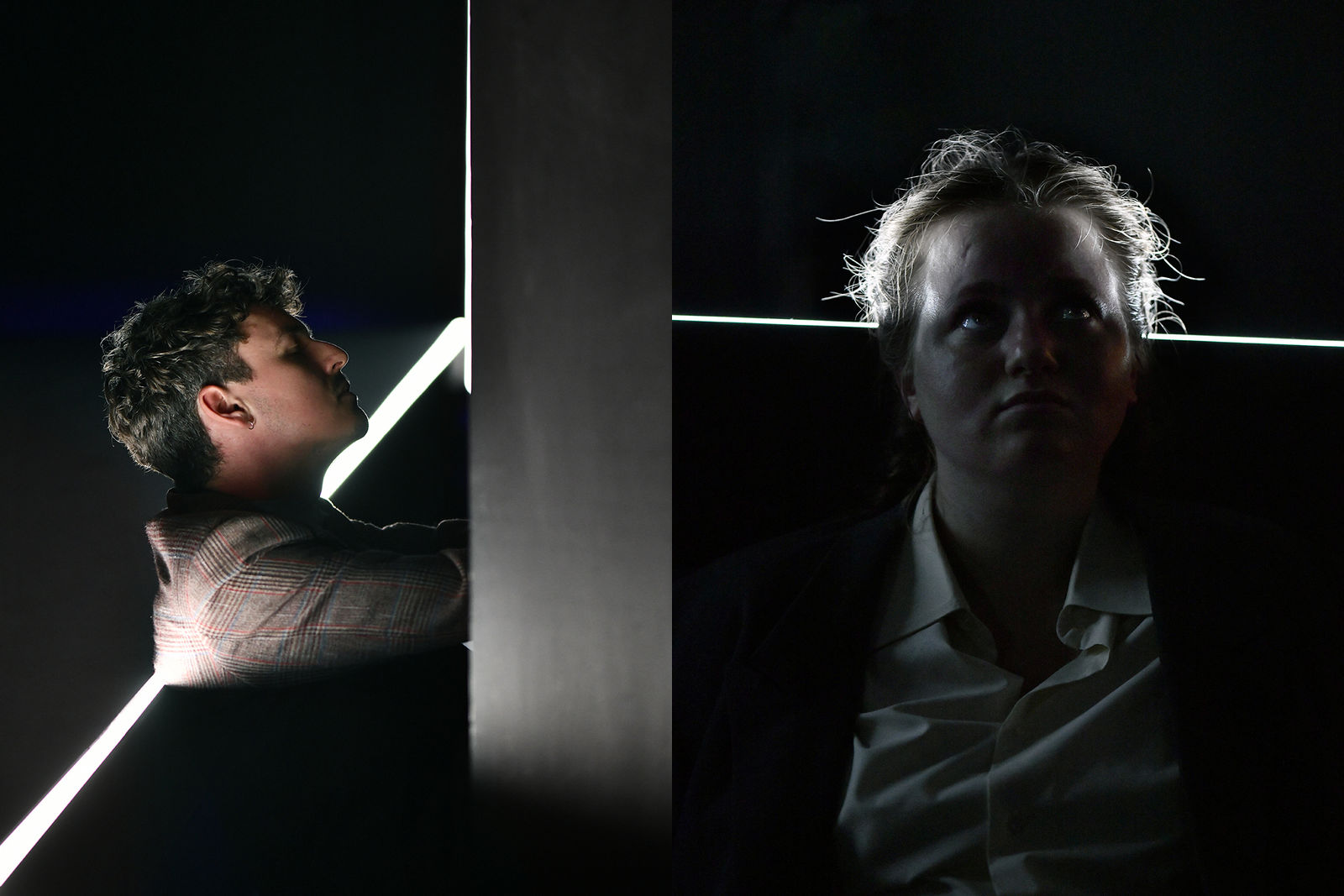
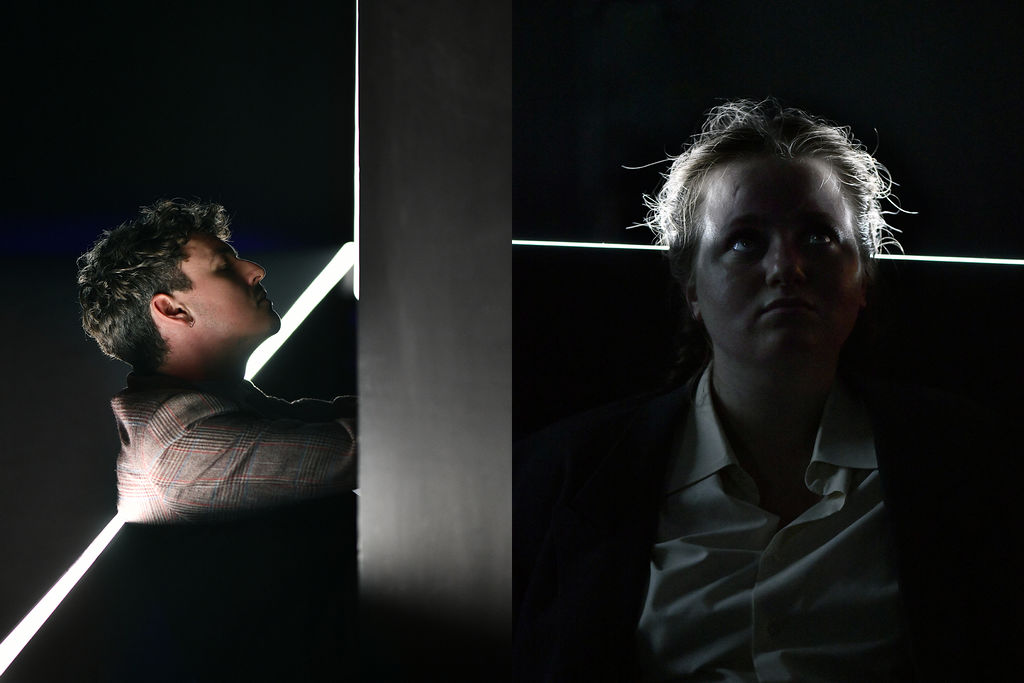
Those who follow Samira Graf’s movement through the play are not the only ones to be reminded of the extent to which a life is always both embedded in a network and experienced in a highly individual way. This simultaneity is also always visible in small solo moments: when Alina Rehsteiner, Gizem Baruk, Moubarak Djibril, Lionel Schwägli, Dominik Schüepp, Jascha Harke, Flynn Jost or Valerie Tveiten each set out on their own to make a new start, move around in an integrated and yet clearly detached manner, break away from the group, or even remain by themselves. The tragedy of this becomes clear at the latest when Dariia Yelahina asks the audience to open their eyes to the reality of the war in Ukraine, from which she has fled and now is part of this network, but is also alone with this experience in it.
Singoh Nketia's music is partly responsible for breathing pauses, but also for breathlessness, for the quiet moments as well as for the palpitations. She takes up both the themes of the beginning and the network as an aesthetic principle, and impressively shows how transformation can even emerge from collaboration when more happens once the individual parts come together than just layering them on top of each other. Not only is the music made up of complex interlocking loops, it is also influenced by the sounds on stage – until the question arises as to what came first.
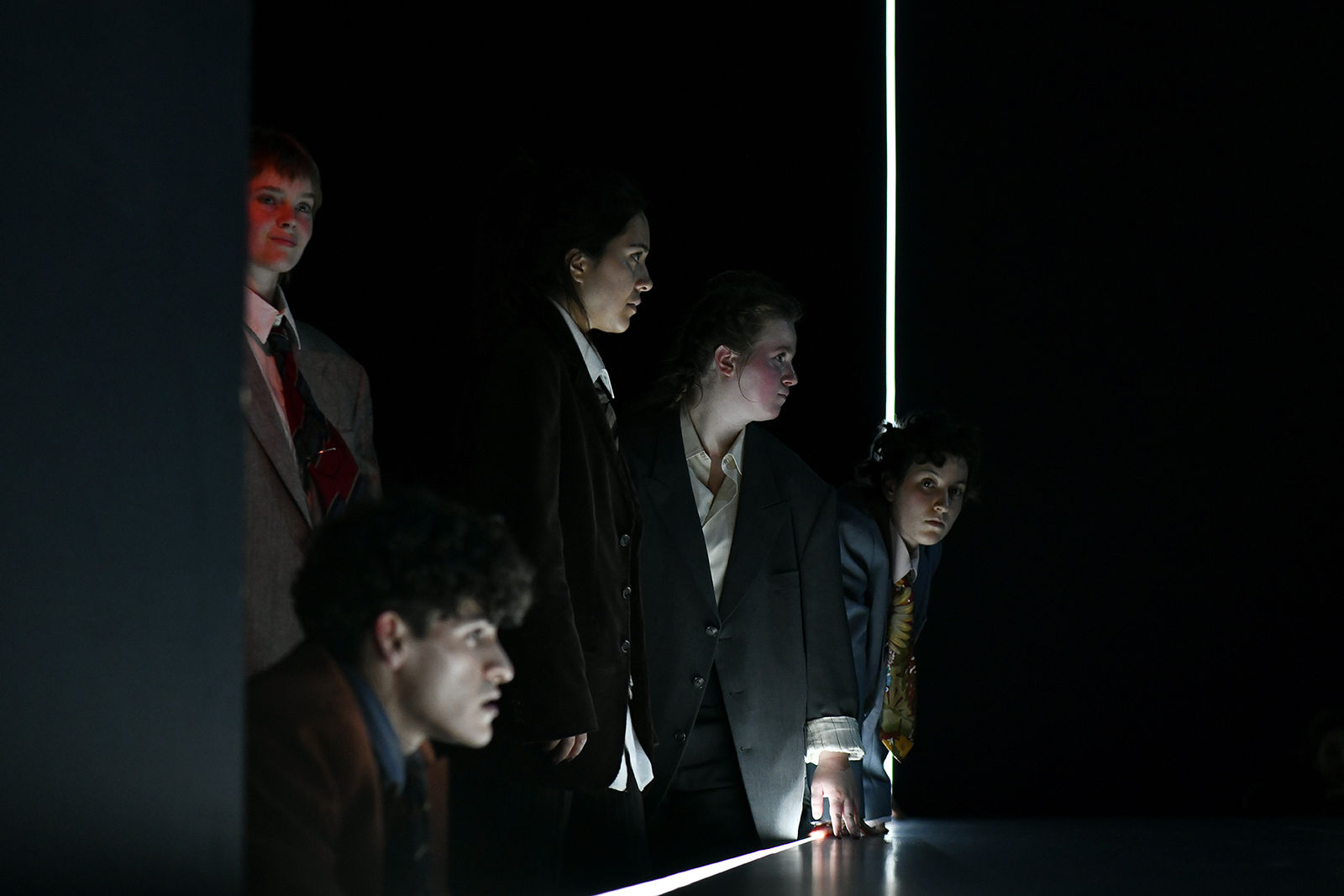
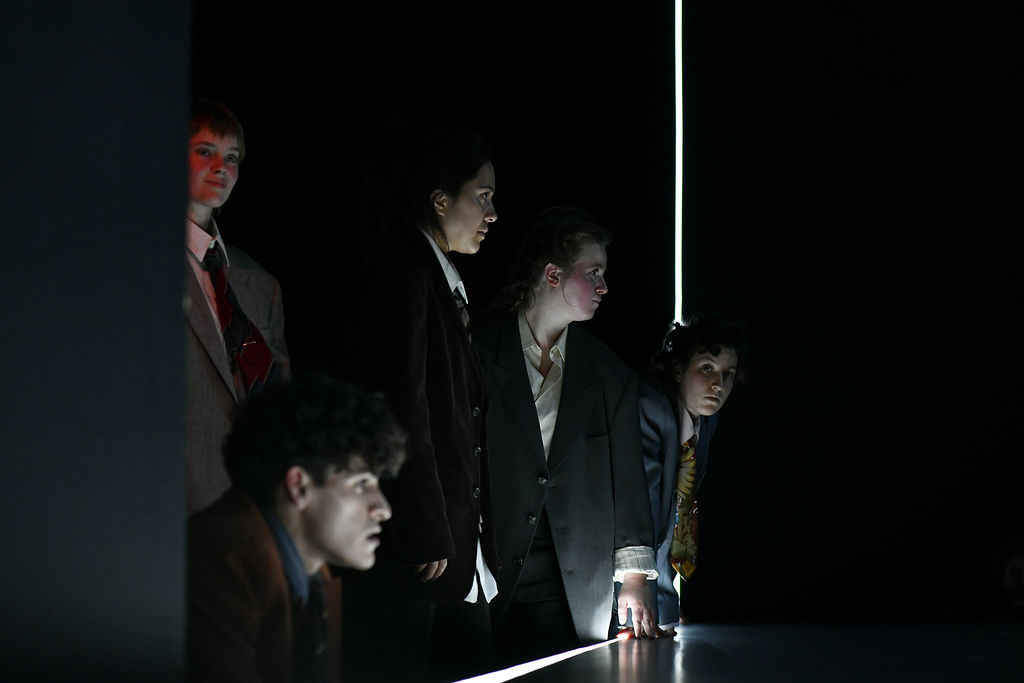
With her solo performance, Tamiris Dos Reis speaks of the simultaneous happiness and absolute sadness that human beings can never completely share their own world of thoughts. The fact that the two-way connection is special in itself translates into short choreographic episodes, for example, by Elias Kim Müller and Xhenisa Demiri as well as Mila Knapp and Minou Mafalda Taghavi.
Willy Krähenbühl with gestures and Anina Steiner, Timon Däster, Lee Fischer, Yanike Mica Becklas, Amanda Lucia Dos Reis, Lara Fuchs, Vanessa Meyer and Helene Bott lead with their texts – which Lucien Haug has cast into form based on writing assignments to the group – with their voices back into the collective space of possibility that opens up when looking at the stage in the subjunctive.
Working at and on the Institution
The fact that the Pfauen stage can host an ensemble of 30 people requires a lot of preparatory work. The architecture of the Pfauen hardly provides a space in which such a large group can discuss together, let alone eat. The spatial capacities of the canteen would have burst if this production had pitched up there during the breaks like any other – and in the confined spaces, some would probably have reached their nervous limits. Accordingly, solutions were sought for months with colleagues from all artistic and technical fields, and were also found through lengthy processes. In some cases, it was just habits that got in the way, in others, it was official regulations, and not least financial issues where the sponsoring department again became important.
In this sense, jetzt, jetzt, jetzt is one of many works that Suna Gürler has done at the Schauspielhaus Zürich in recent years. While she has made a name for herself with her stage plays by young Swiss authors, she has created countless new opportunities for young actors to connect with the Schauspielhaus. Together with Benjamin von Blomberg and Nicolas Stemann, Suna Gürler has scrapped the Junge Schauspielhaus, which was initially perceived as an affront. In fact, however, this was done out of the understanding that the separation – once highly meritorious in order to also give young people a place in the theatre – no longer fits; that there is a need for youth clubs, of course, but that more thought needs to be put into this if theatre should be accessible to many different people. Based on these thoughts, the Theaterjahr, many productions for and with young people, open stages, paid internships, and much more have come into being. And, a network of young theatre makers. This network should be strengthened once again with this production and continue to grow. After all, when the artistic directorship ends, many of these people will want to continue making theatre. It is still unclear how the doors of the Schauspielhaus will then open. It is all the more significant that the networking with and into the house could be strengthened once again, be it with a workshop by ensemble member Songhay Toldon, be it through the guided tour of the Pfauen by technical director Dirk Wauschkuhn, be it through all the other encounters, in tailoring, in make-up, with the stage manager ... In this sense, this play is a beginning as an answer to the announcement of the end. (YE)
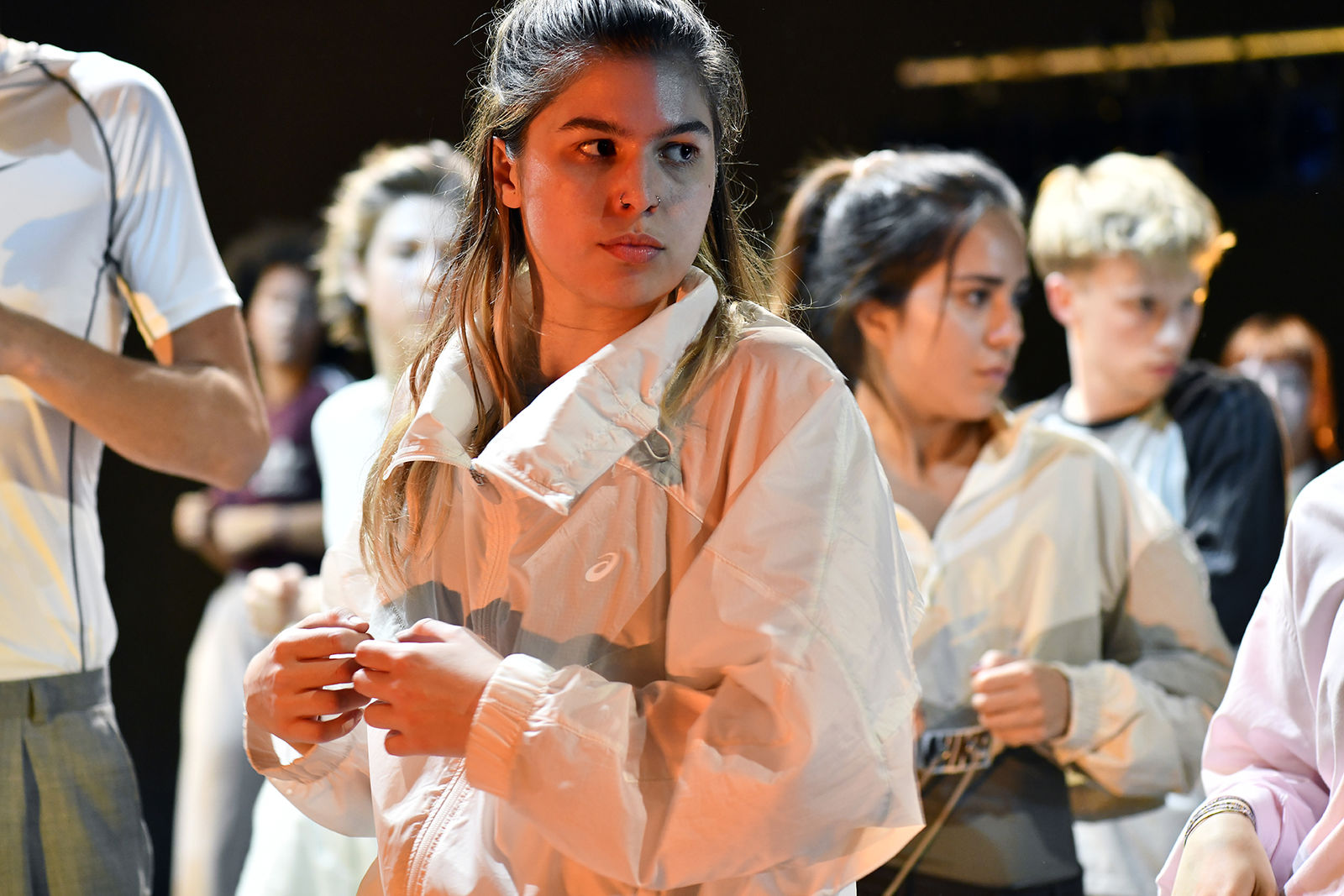
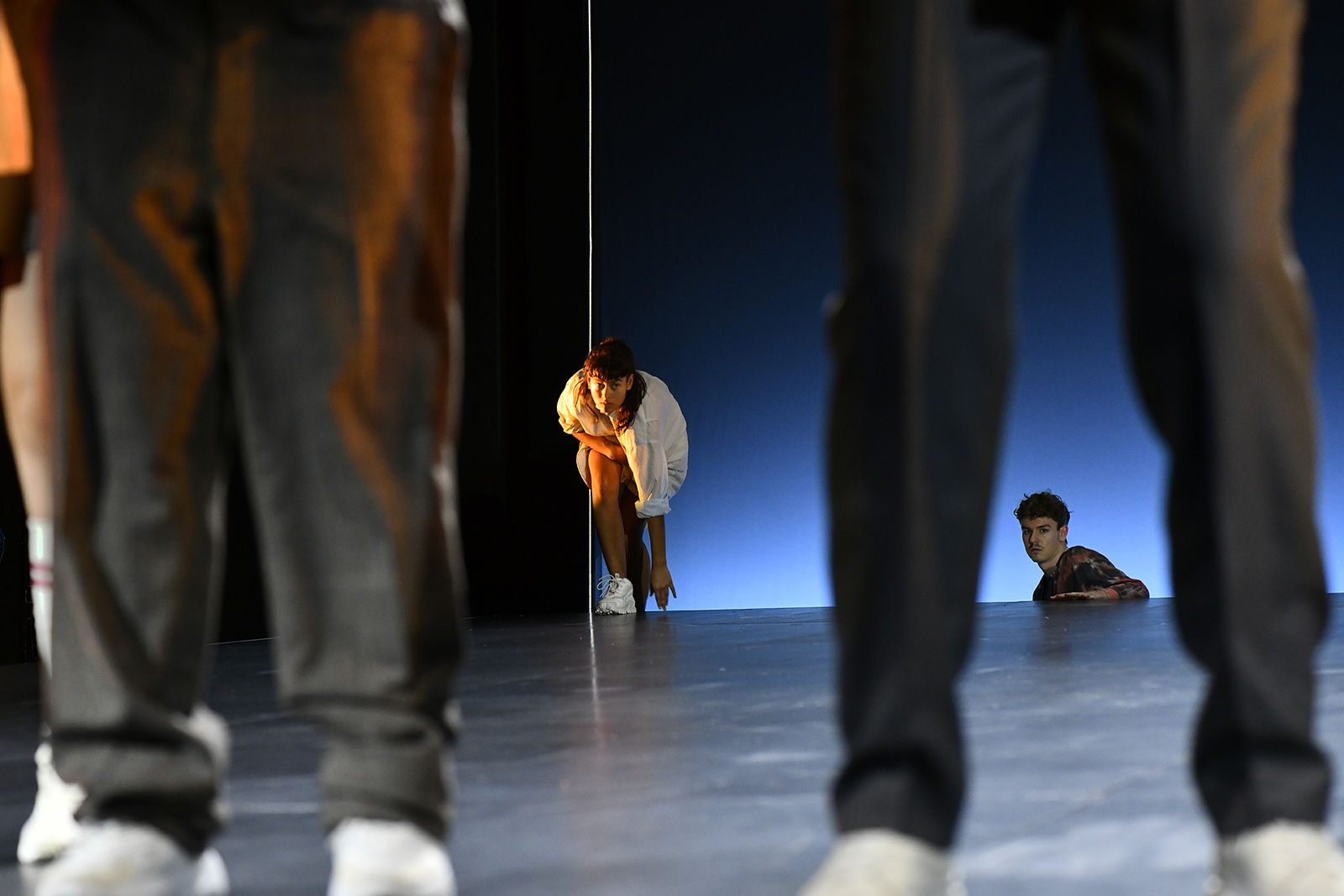
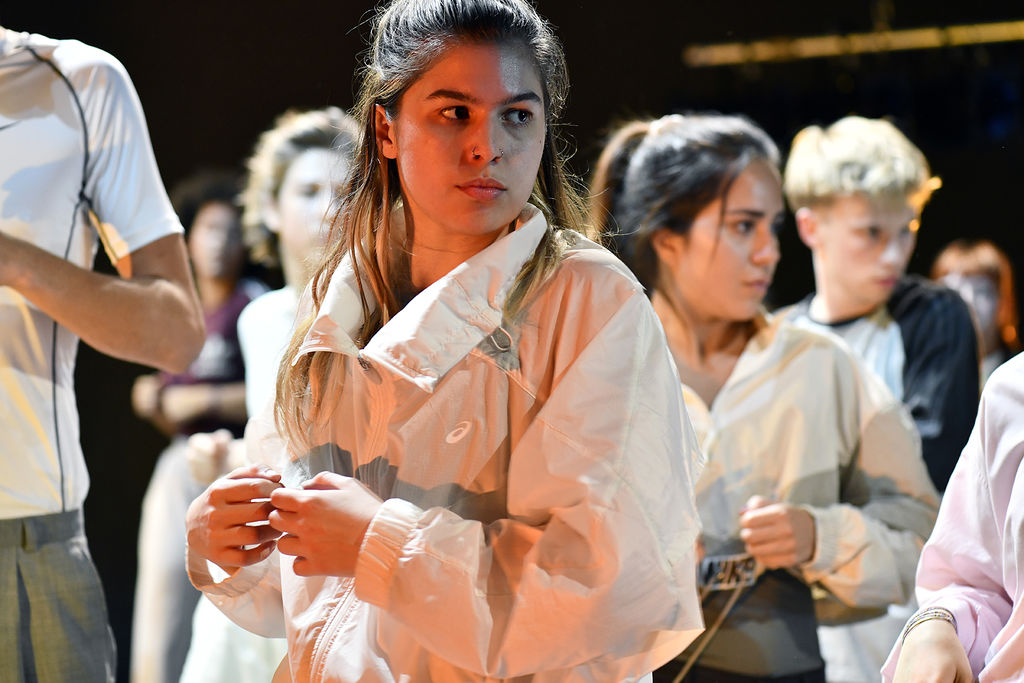
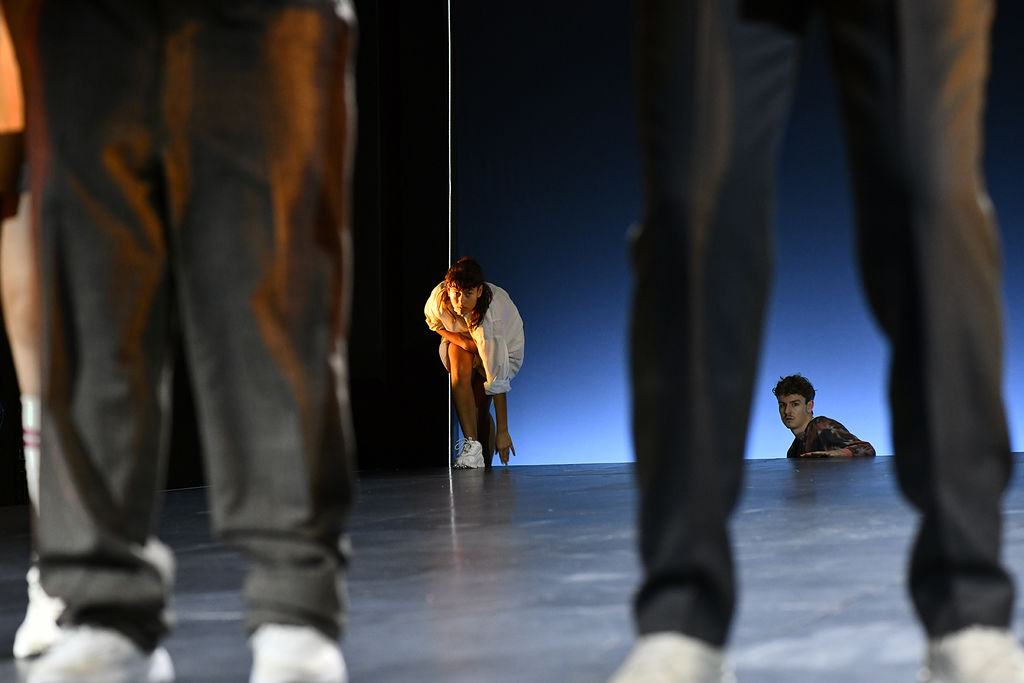
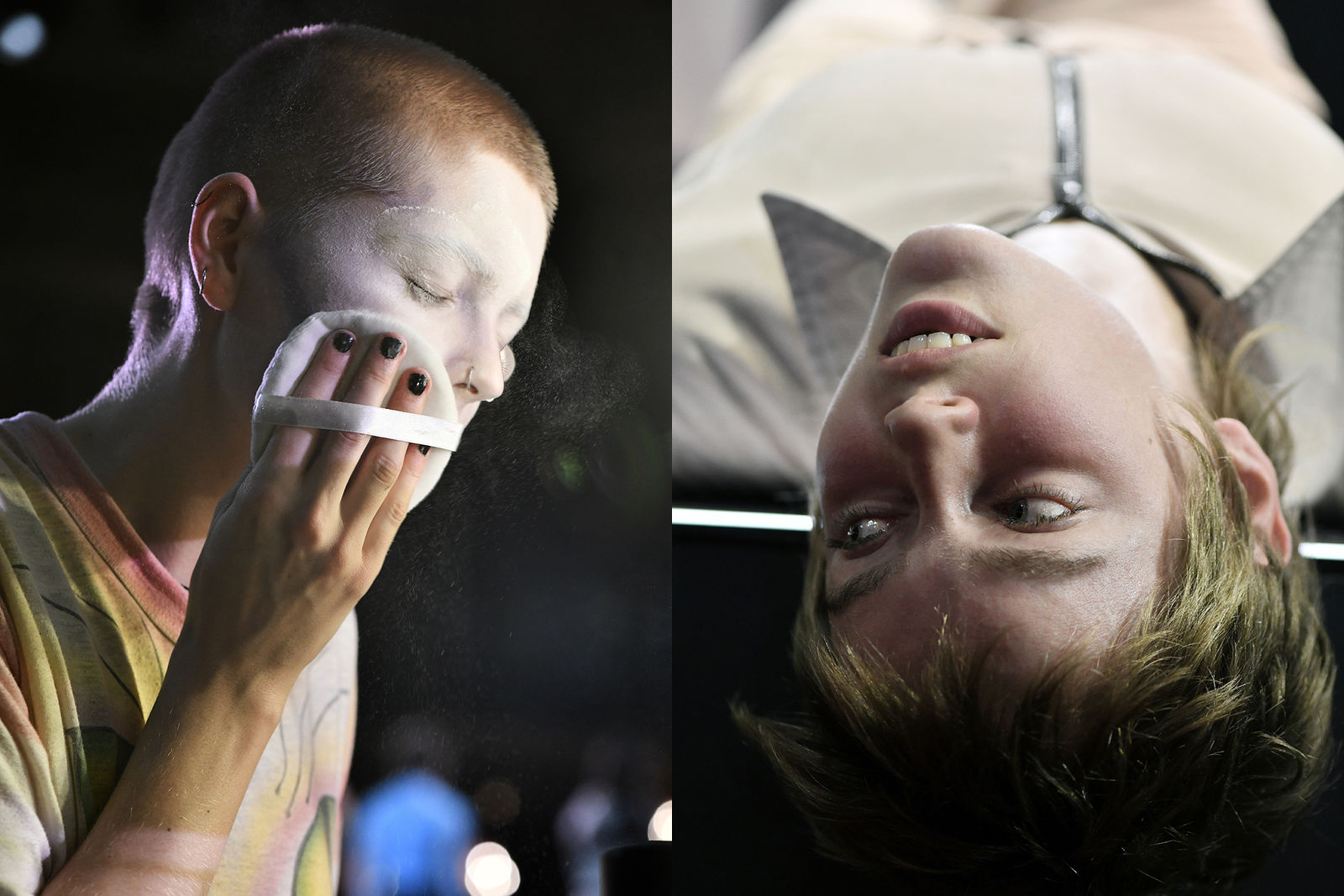

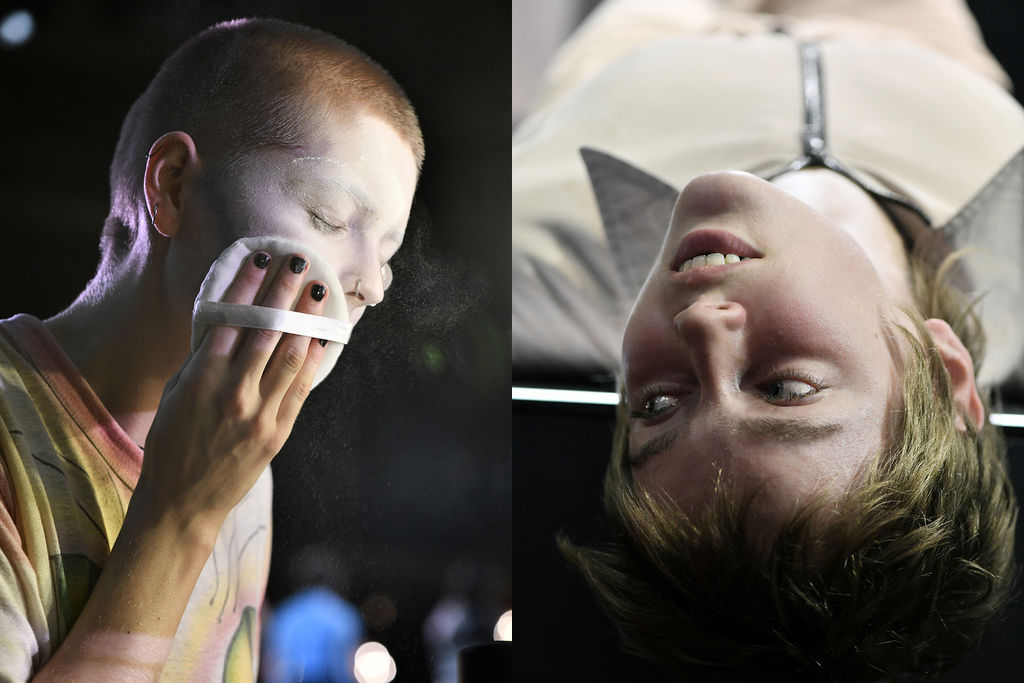
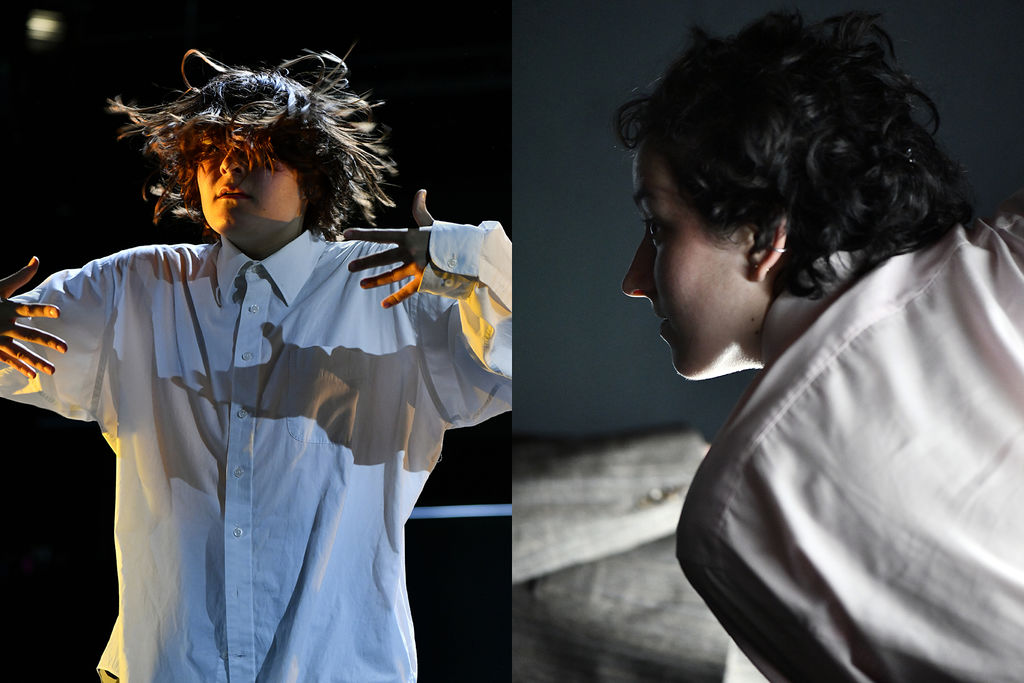
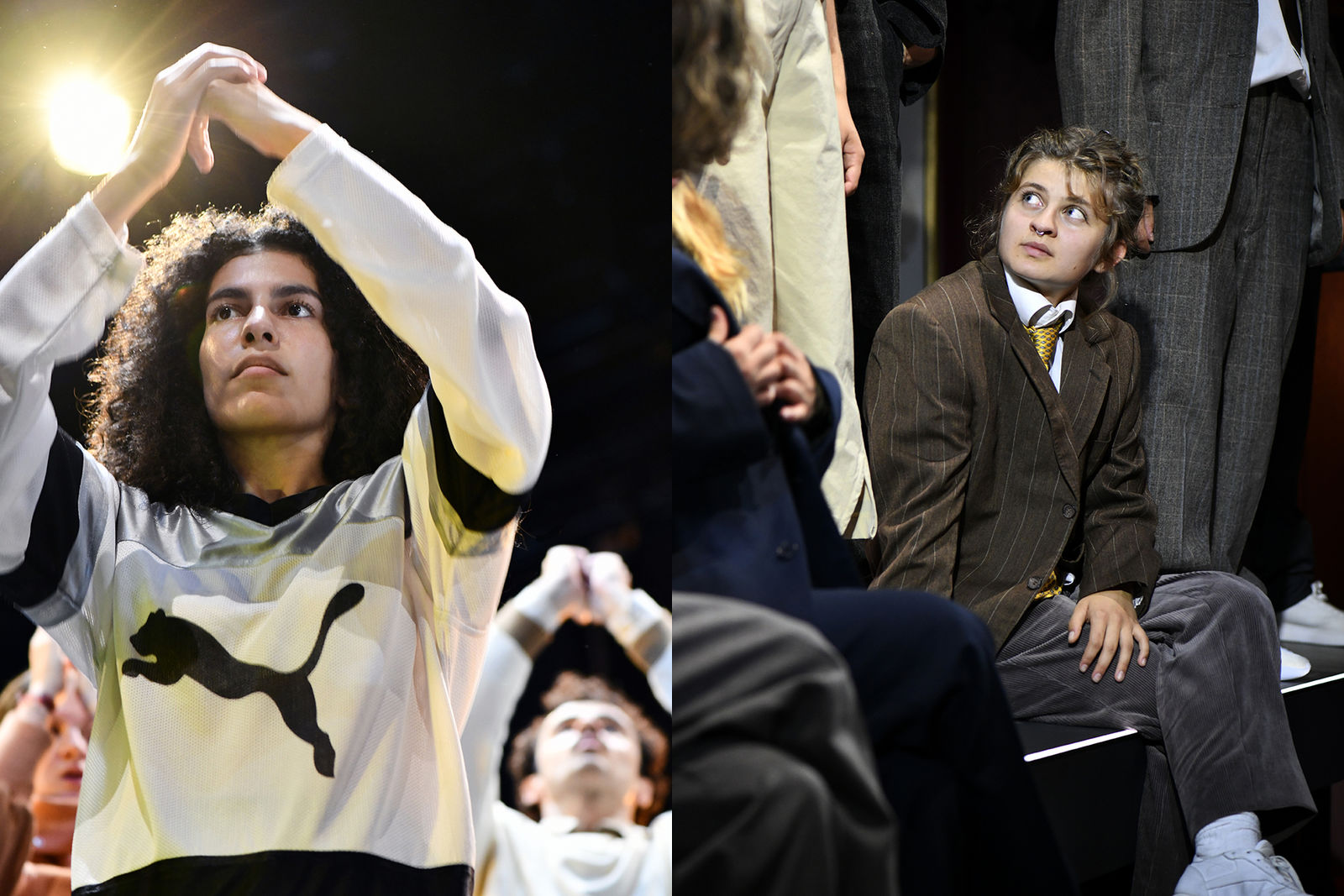

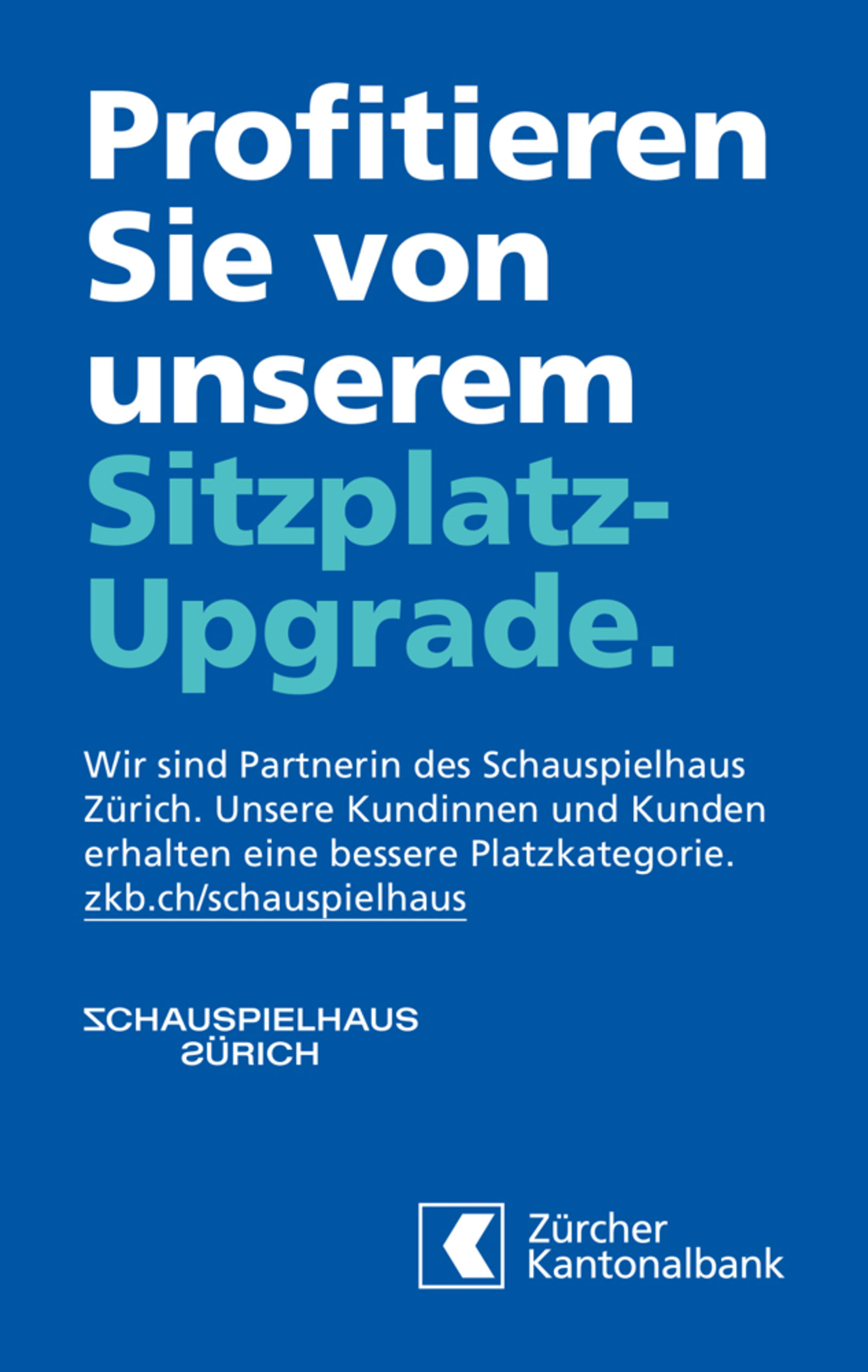
Ad
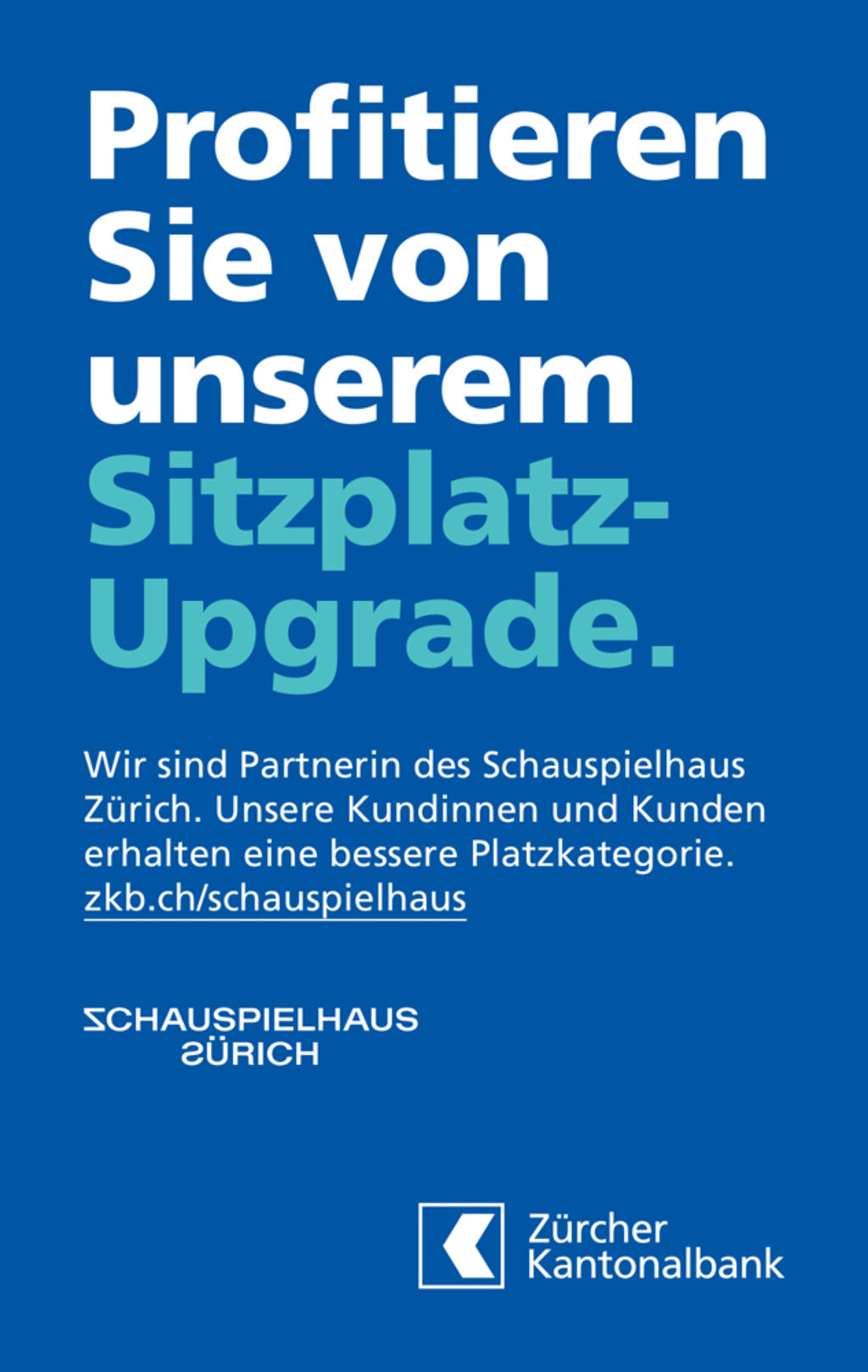
Ad
All text contributions are original contributions for this programme booklet.
For permission to use the quotation from Dividuum, we would like to thank Gerald Raunig and transversal text Wien.
Editor: Yunus Ersoy
Assistance Interview: Emilia Wehrli
Photography: Zoé Aubry
Video-Teaser: Lisa Gertsch
Season 2023/24
Artistc Directors: Benjamin von Blomberg / Nicolas Stemann
Offizielle Ausstatter des Schauspielhauses Zürich:
MAC Cosmetics, Optiker Zwicker, Ricola, Südhang Weine, Tarzan Swiss Streetfashion





